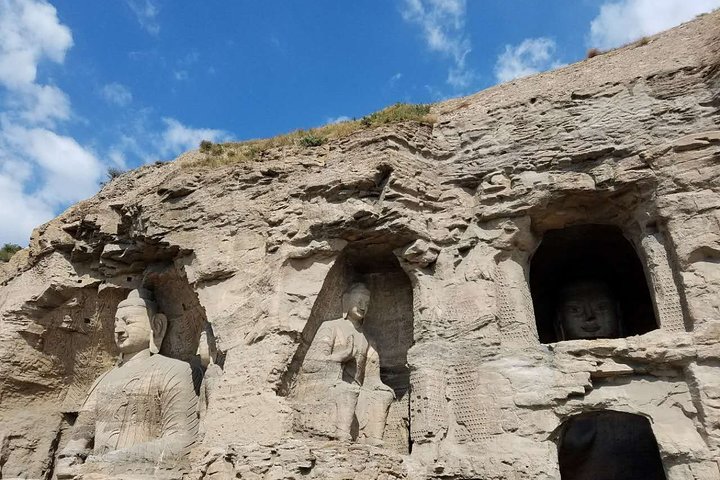Exploring the Hanging Temple and Hengshan: A Journey Through Time
Intrigued by the tales of the Hanging Temple and Hengshan Mountain, I set out on a journey to Datong to explore these ancient wonders. Join me as I delve into the rich history and breathtaking beauty of these sacred sites.
A Journey to the Past: The Hanging Temple
As I embarked on my journey from Beijing to Datong, the anticipation of visiting the Hanging Temple filled me with excitement. The bullet train ride was a smooth and swift transition from the bustling city to the serene landscapes of Shanxi Province. Upon arrival, I was greeted by my local tour guide, whose knowledge and passion for the region’s history were immediately apparent.
The Hanging Temple, or Xuankong Si, is a marvel of ancient engineering. Built in 491 A.D., it clings to the west cliff of Jinxia Gorge, suspended more than 50 meters above the ground. As I approached the temple, the sight of its wooden structures seemingly defying gravity left me in awe. The temple is unique in that it hosts worship for Taoists, Confucians, and Buddhists, a testament to the harmonious coexistence of these philosophies in Chinese culture.
Walking through the temple, I was struck by the intricate carvings and statues that adorned the halls. Each piece told a story, a glimpse into the spiritual and cultural tapestry of ancient China. My guide shared tales of the temple’s construction and the legends that surround it, enriching my understanding of this architectural wonder.
Ascending Hengshan Mountain
After a delightful lunch at a local restaurant, we made our way to Hengshan Mountain, one of China’s Five Sacred Mountains. The cable car ride offered breathtaking views of the surrounding landscape, a patchwork of green forests and rugged peaks.
Hengshan Mountain is a place of profound natural beauty and cultural significance. As we explored its trails, my guide pointed out the stone inscriptions left by emperors and poets over the centuries. These ancient writings, etched into the rock, spoke of the mountain’s enduring allure and its role as a spiritual haven.
The mountain’s 72 peaks stretch across 150 kilometers, each with its own unique character. We visited several temples nestled among the cliffs, each offering a tranquil space for reflection and meditation. The air was filled with the scent of pine and wildflowers, a reminder of nature’s ever-present beauty.
Embracing the Spirit of Hengshan
Our final stop was the Beiyue Temple, a sacred site dedicated to the worship of the mountain itself. Here, I felt a deep connection to the land and its history, a sense of reverence for the generations who have come to Hengshan seeking wisdom and solace.
As I stood on the temple’s terrace, gazing out at the vast expanse of the mountain range, I was reminded of the importance of preserving these cultural treasures. The Hanging Temple and Hengshan Mountain are not just historical sites; they are living embodiments of China’s rich spiritual heritage.
This journey was more than a tour; it was an opportunity to immerse myself in the traditions and philosophies that have shaped this region for millennia. I left Datong with a renewed appreciation for the delicate balance between nature and human ingenuity, and a deeper understanding of the cultural tapestry that defines Asia.












































